Pyongyang is the capital of North Korea. Situated on the Taedong River, this city is not only the political center but also the cultural and economic hub of the country.
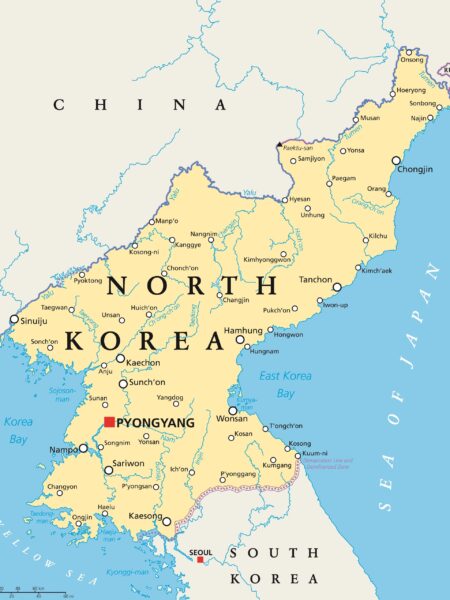
Pyongyang showcases a mix of modern architecture and historical landmarks. The city is home to various monuments, museums, and government buildings that reflect the unique characteristics of North Korean society. It plays a vital role in the nation’s affairs and is a prominent symbol of its governance and ideology.
Where is Pyongyang?
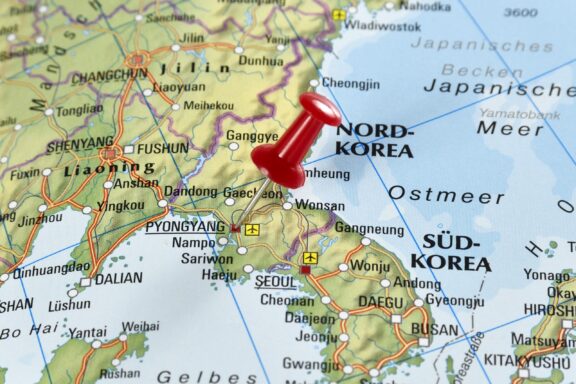
Pyongyang is located in the southwestern part of North Korea, on the banks of the Taedong River. It lies in the western part of the Korean Peninsula, approximately 120 kilometers (75 miles) from the Yellow Sea.
Its strategic position on the river has made it a significant cultural and economic center and the heart of the nation’s political activities. The city’s location also offers a blend of urban development and natural landscapes, with the river providing a scenic backdrop to bustling city life.
History of Pyongyang
Pyongyang’s history begins with its establishment as a commandery by the Chinese Han Dynasty in 108 BCE. Over the following centuries, it witnessed various dominations and cultural influences, gradually growing into a significant military post.
During the Goryeo period (918–1392), the city further developed its military importance and became a regional center for Buddhism. Many temples were built, and the city’s strategic location on the Taedong River also helped it flourish as a trade center.
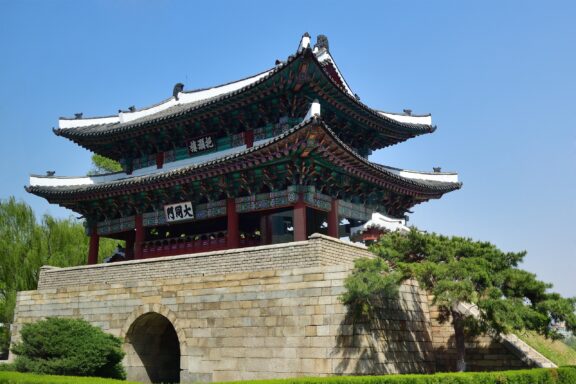
During the Goryeo period (918–1392), the city further developed its military importance and became a regional center for Buddhism. Many temples were built, and the city’s strategic location on the Taedong River also helped it flourish as a trade center.
The Joseon Dynasty era (1392–1897) saw Pyongyang as a critical provincial city, but it also endured several invasions, including the devastating Japanese invasions in the late 16th century. The city underwent periods of destruction and rebuilding, reflecting the turbulent times.
The Japanese occupation (1910–1945) brought about a new phase of development, introducing industrial infrastructure. However, this period also left a mark on the city’s architecture and cultural heritage, with many traditional Korean structures replaced by Japanese-style buildings.
The Korean War (1950–1953) was a turning point for Pyongyang. The city suffered extensive damage during the conflict, losing its historical sites and structures.
The following rebuilding process emphasized monumental architecture, reflecting the government’s ideology. Large public squares, wide boulevards, and impressive state buildings became prominent features of the city’s landscape.
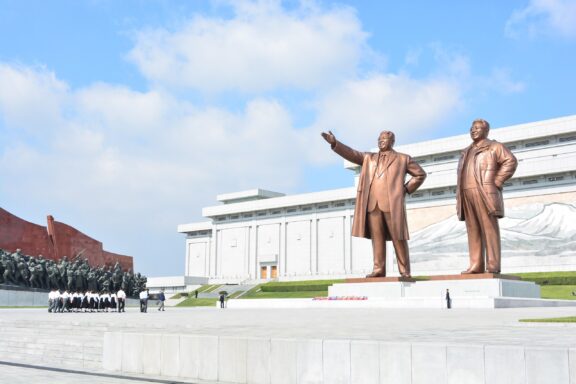
In contemporary times, Pyongyang has become a symbol of North Korean ideals. The government’s focus on self-reliance and revolutionary spirit is evident in the grand monuments, museums, and structures found throughout the city.
From the towering Ryugyong Hotel to the Mansu Hill Grand Monument, Pyongyang’s architecture is a testament to the nation’s aspirations and achievements. Today, the city stands as a unique blend of historical heritage and modern ambition, representing both the struggles and triumphs of the North Korean people.
Features of Pyongyang
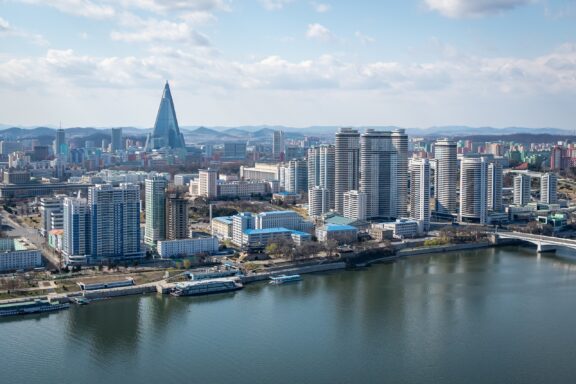
Pyongyang possesses a distinctive character shaped by its unique political context and historical background. As the center of government, it showcases monumental architecture, featuring grandiosity that emphasizes strength and self-reliance.
The city has broad avenues and large public squares to accommodate mass gatherings and parades. However, despite its vibrancy, an element of mystery surrounds Pyongyang partly due to North Korea’s isolation from much of the international community. The city’s controlled and planned appearance, the uniformity of its buildings, and the restricted access for foreigners add to this enigmatic aura.
Geography and Climate
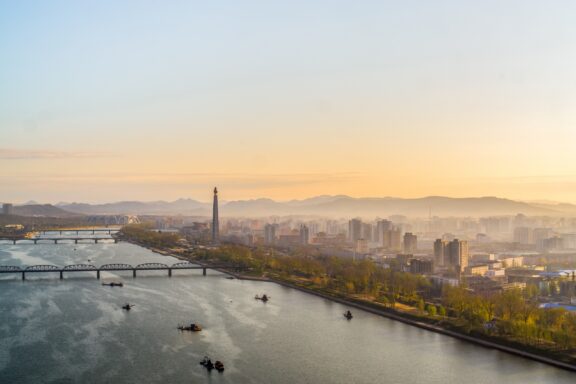
Pyongyang’s geography features a mix of hills and flat plains, with the surrounding region characterized by mountain ranges. The city’s terrain provides a balance between urban construction and green spaces.
The climate is classified as humid continental, with four distinct seasons. Summers in Pyongyang are warm and humid, often accompanied by heavy rainfall. Winters are cold and dry, with occasional snowfall. The city’s climate has influenced its agriculture, allowing for the cultivation of various crops, including rice.
Population
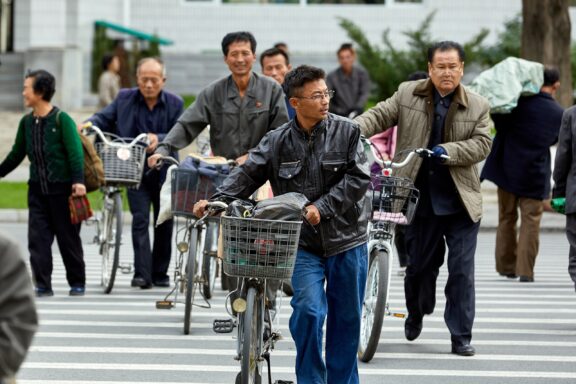
Pyongyang is the most populous city in North Korea, with over 2.8 million inhabitants. The population is predominantly Korean, and the city is home to many of the country’s elite and government officials.
Education is highly emphasized, and Pyongyang hosts some of the leading universities and educational institutions in North Korea. The city’s social fabric reflects a blend of traditional Korean culture with a firm adherence to the ruling Workers’ Party principles.
Economy
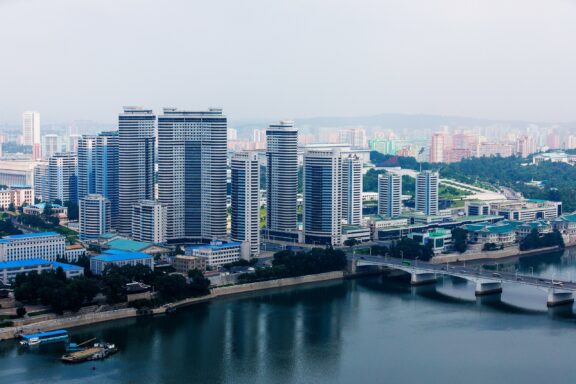
The economy of Pyongyang is diverse and central to North Korea’s economic landscape. It is a hub for various industries, including manufacturing, technology, and transportation. The city’s factories produce various goods, from machinery to textiles.
Furthermore, Pyongyang is crucial to the nation’s scientific and technological advancements, with various research centers contributing to national development. Tourism, although limited due to international restrictions, also forms a part of the city’s economy, with several landmarks attracting domestic visitors.
The economic health of Pyongyang is closely tied to national policies and international relations, reflecting the broader financial situation of North Korea. The city’s economy mirrors the state’s focus on self-reliance and has seen significant growth in recent years, primarily directed by the government’s development plans.
Things to Do and Places to See in Pyongyang
In Pyongyang, a multitude of engaging activities and sights await visitors. Here are some of this distinctive capital city’s most renowned sites and attractions.
1. Kumsusan Palace of the Sun
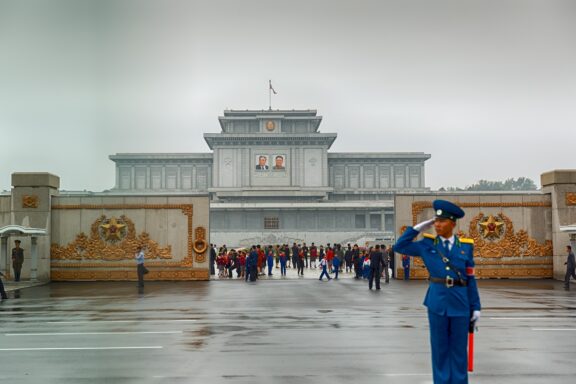
Kumsusan Palace of the Sun is a vital symbol of North Korea’s reverence for its leaders. This majestic mausoleum, dedicated to Kim Il-sung and Kim Jong-il, is a significant site of both historical and political importance.
The grandiose palace blends Korean architectural style and modern grandeur, encompassing halls filled with awards, medals, and artifacts related to the leaders. Embellished with fine marble, chandeliers, and meticulous detailing, it offers an impressive visual experience.
2. Juche Tower
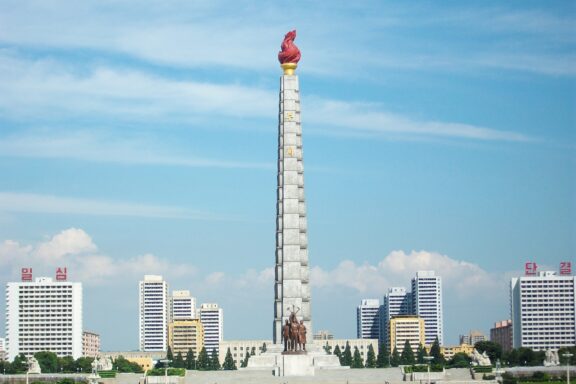
Juche Tower, soaring high along the Taedong River, celebrates the ideology of Juche, emphasizing North Korea’s commitment to self-reliance and independence. Standing at 170 meters, the tower is constructed with white granite and capped with a red-flame metal sculpture.
Inside the tower, there’s a museum dedicated to the philosophy of Juche, explaining its origins and significance. Tourists can ascend the tower’s elevator to an observation platform, offering breathtaking views of Pyongyang. It’s an exciting destination for those interested in political ideology and modern architectural aesthetics.
3. Munsu Water Park
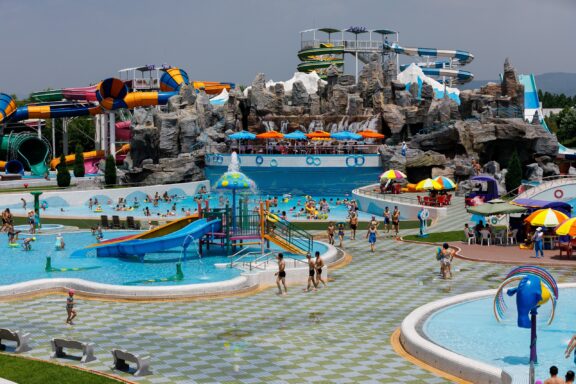
Munsu Water Park, a recreational gem in Pyongyang, offers a fun and relaxing escape within the urban environment. This water park is an example of the country’s efforts to provide leisure activities to its residents.
4. Arch of Triumph
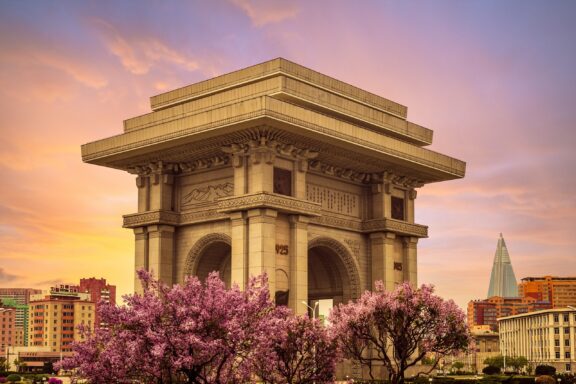
The Arch of Triumph is a monumental structure that celebrates Korea’s resistance against Japanese occupation. Built from white granite, the arch rises to 60 meters and is adorned with intricate carvings and inscriptions. Its grand appearance commands attention, and its position offers a gateway to other significant sites in the city.
Visitors can climb the arch for a panoramic view of the city and nearby Moran Hill. It’s an opportunity to appreciate North Korean artistry and reflect on the historical significance that resonates with national identity.
5. Korean War Museum (Victorious Fatherland Liberation War Museum)
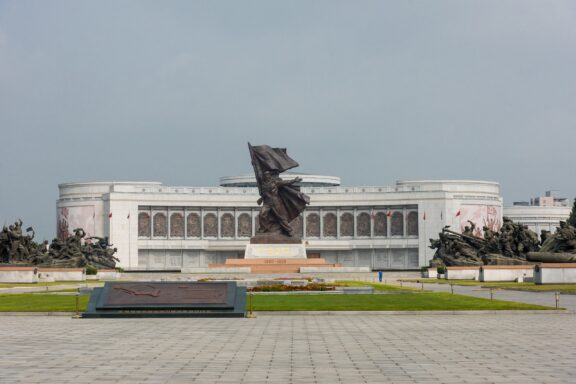
The Victorious Fatherland Liberation War Museum is an institution in that provides a unique insight into North Korea’s perspective on the Korean War. Its extensive collection and imposing architecture make it a must-visit for history enthusiasts.
The museum hosts several halls dedicated to different aspects of the war, from weaponry to personal stories. Exhibits include photographs, documents, dioramas, and actual military equipment and tourists can explore the museum’s various halls to gain a deeper understanding of the conflict, its context, and its impact on modern Korea.
6. Kim Il-sung Square
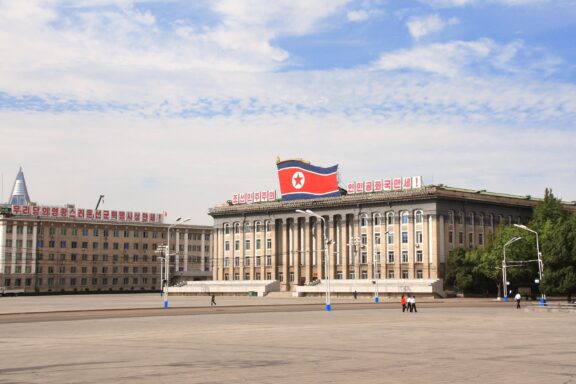
Kim Il-sung Square is a focal point for significant national events. Named after North Korea’s founding leader, it represents the nation’s political heart. Substantial government buildings surround the vast open space, featuring a grand podium for leaders’ speeches.
The square is orderly, and its symmetrical design exemplifies the importance of structure and uniformity in North Korean society. Visiting this square allows tourists to absorb the atmosphere of national unity, political fervor, and architectural harmony. It’s a place to witness firsthand the public expression of North Korea’s ideology and governance.
7. Ryugyong Hotel
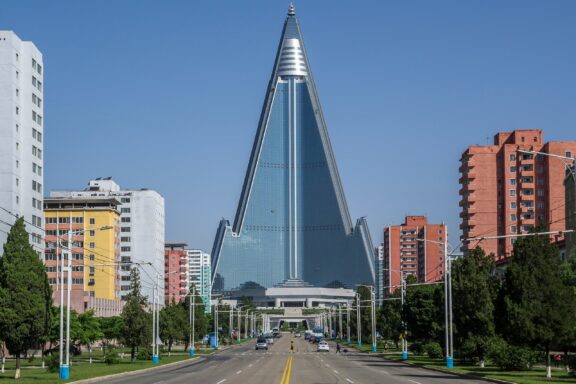
The Ryugyong Hotel is an iconic, though incomplete, structure that has become synonymous with Pyongyang’s skyline. Its pyramid shape and towering height make it one of the most recognizable buildings in the city.
Standing at 330 meters with 105 floors, this ambitious project is a blend of hotel, office, and condominium spaces. Although it has faced construction delays and challenges, its design and appearance remain intriguing.
8. Workers’ Party Foundation Monument
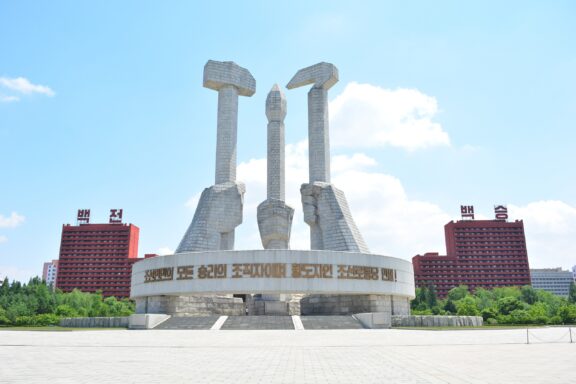
The Workers’ Party Foundation Monument is a site that encapsulates the socialist principles driving the nation. Featuring a hammer, sickle, and writing brush, the monument’s design symbolizes the unity of workers, farmers, and intellectuals. Plaques and sculptures surround it and serve as an artistic and political statement.
Visitors can explore the monument to understand the symbolism and ideology underpinning North Korean society. It’s a thought-provoking destination, reflecting the country’s political landscape and artistic expression.
9. Pyongyang Metro
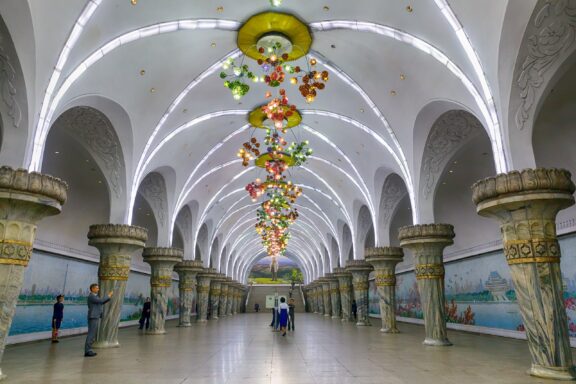
Pyongyang Metro is a transportation system and a showcase of North Korean cultural themes and technological prowess. The metro is both a practical means of travel and a site of interest, adorned with chandeliers, mosaics, and sculptures; each station is a visual feast representing various aspects of the country’s history and identity.
The metro’s vintage trains add to the unique atmosphere. Tourists can ride the metro to experience daily life in Pyongyang and enjoy the elaborate decorations that turn each station into an art gallery. It’s a chance to see the city from a different perspective, engaging with its artistic heritage and modern daily routine.
10. Tumba del Rey Tongmyong
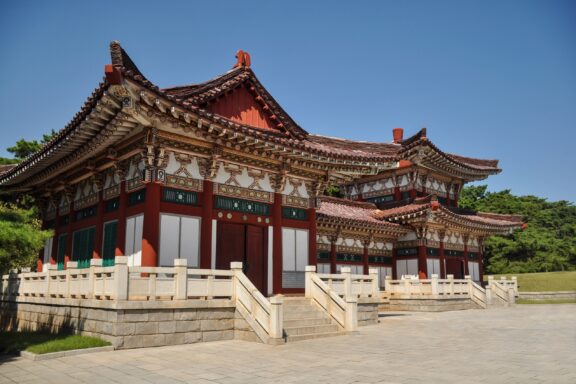
The Tomb of King Tongmyong, a UNESCO World Heritage site near Pyongyang, connects to ancient Korean civilization. It commemorates the legendary founder of the Goguryeo Kingdom, linking contemporary North Korea with its distant past.
This historical complex consists of various tombs within a carefully arranged landscape, including the king. Its design and relics provide a window into the ancient Goguryeo culture and burial practices.
Frequently Asked Questions
Can I travel to Pyongyang?
Yes, but tourism in Pyongyang is strictly controlled, and independent travel is prohibited. Visitors must be part of a guided tour with an approved tour operator.
Is it safe to visit Pyongyang?
Travel to Pyongyang is generally considered safe, but adherence to local laws and regulations is essential. Tour guides will instruct visitors on appropriate behavior.
What languages are spoken in Pyongyang?
Korean is the official language, and English is rarely spoken. Tour guides will typically translate and facilitate communication.
Can I use my mobile phone or access the Internet in Pyongyang?
International mobile phones usually don’t work, and internet access is restricted. Some hotels may offer internet access, but it will be limited.
Which currencies are accepted in Pyongyang?
The North Korean Won is the local currency, but tourists often prefer to use Euros, Chinese Yuan, or US Dollars.
What’s the best time to visit Pyongyang?
Spring (April to June) and autumn (September to October) are considered the best times to visit, with mild temperatures and less rainfall.
Are there any specific dress codes?
While there are no strict dress codes for tourists, modest and respectful attire is encouraged, especially when visiting significant monuments and sites.
What’s the traditional food like in Pyongyang?
The traditional food in Pyongyang reflects the rich culinary heritage of Korea, characterized by bold flavors, varied textures, and a balance of ingredients. It often emphasizes seasonality and includes a blend of vegetables, meats, and grains prepared using age-old techniques.
What are some must-try authentic North Korean dishes I should try in Pyongyang?
When in Pyongyang, experiencing authentic North Korean cuisine is a must. Some essential dishes include:
• Naengmyeon: A cold noodle dish especially popular in summer, often served with a tangy broth and various accompaniments.
• Bulgogi: Grilled marinated beef, often cooked at the table, is a flavorful dish representative of Korean barbecue.
• Kimchi: While common throughout Korea, this fermented vegetable dish’s local variations reflect Pyongyang’s flavors and traditions.
Can I take photos while in Pyongyang?
Photography is allowed but can be restricted in certain areas. It’s best to follow the guidelines provided by the tour guides.
Are there any health considerations in Pyongyang?
No specific vaccinations are required, but general travel health precautions are advised. Consult with a healthcare provider before travel.
Final Thoughts
Pyongyang is a unique destination, unlike any other capital city. Its blend of grand monuments, historical significance, and embodiment of North Korea’s complex ideology and culture makes it a fascinating place to explore.
While the controlled nature of tourism and adherence to strict guidelines may present challenges, those seeking to understand a nation often shrouded in mystery will find Pyongyang an illuminating experience.
Image Sources and Copyright Information
- Map of North Korea: © Peter Hermes Furian/Shutterstock
- Map with Location Pin on Pyongyang, North Korea: © Eivaisla/Shutterstock
- Traditional Korean Gate and Pavilion: © Oleg Znamenskiy/Shutterstock
- Statues of Leaders with Marching Soldiers in Background: © mundosemfim/Shutterstock
- Pyongyang Skyline with River View: © Rihui Huang/Shutterstock
- Sunset Over Taedong River in Pyongyang: © JHVEPhoto/Shutterstock
- Locals Riding Bicycles on City Street: © Truba7113/Shutterstock
- Downtown Pyongyang Skyline: © Alexander Khitrov/Shutterstock
- Guard Saluting at Kumsusan Palace of the Sun on Overcast Day: © Truba7113/Shutterstock
- Juche Tower in Pyongyang against Blue Sky: © Chintung Lee/Shutterstock
- Water Park with Slides and Pools: © Alexander Khitrov/Shutterstock
- Arch of Triumph at Dusk with Blooming Trees: © Richie Chan/Shutterstock
- Victorious Fatherland Liberation War Museum Exterior: © Kanokratnok/Shutterstock
- Kim Il-sung Square with Flag and Buildings: © FrentaN/Shutterstock
- Ryugyong Hotel against the skyline: © Torsten Pursche/Shutterstock
- Monumental Sculpture with Hammer, Sickle, and Brush: © mundosemfim/Shutterstock
- Interior of Pyongyang Metro Station: © Truba7113/Shutterstock
- Traditional Korean-style Buildings under Blue Sky: © Saeschie Wagner/Shutterstock